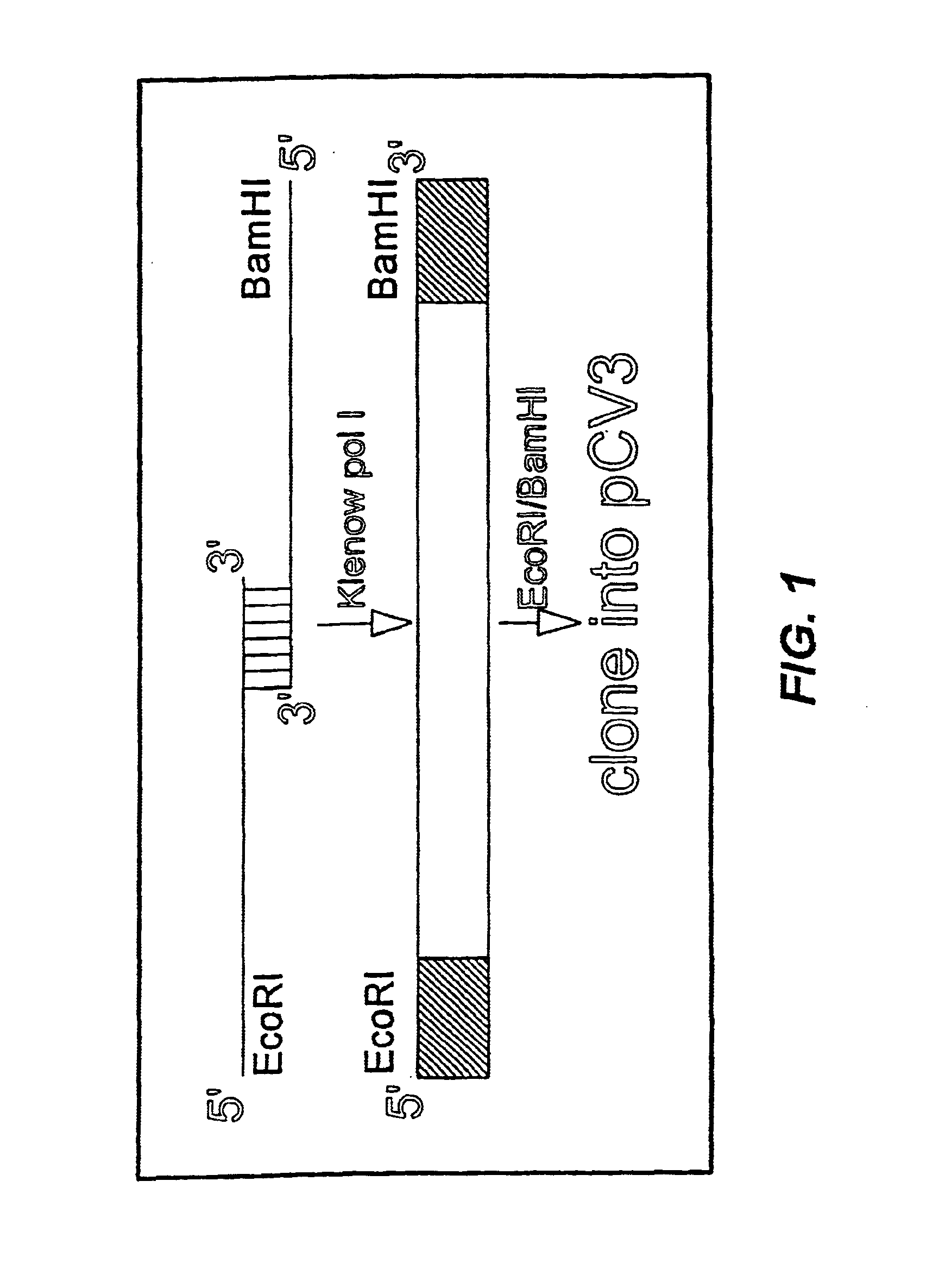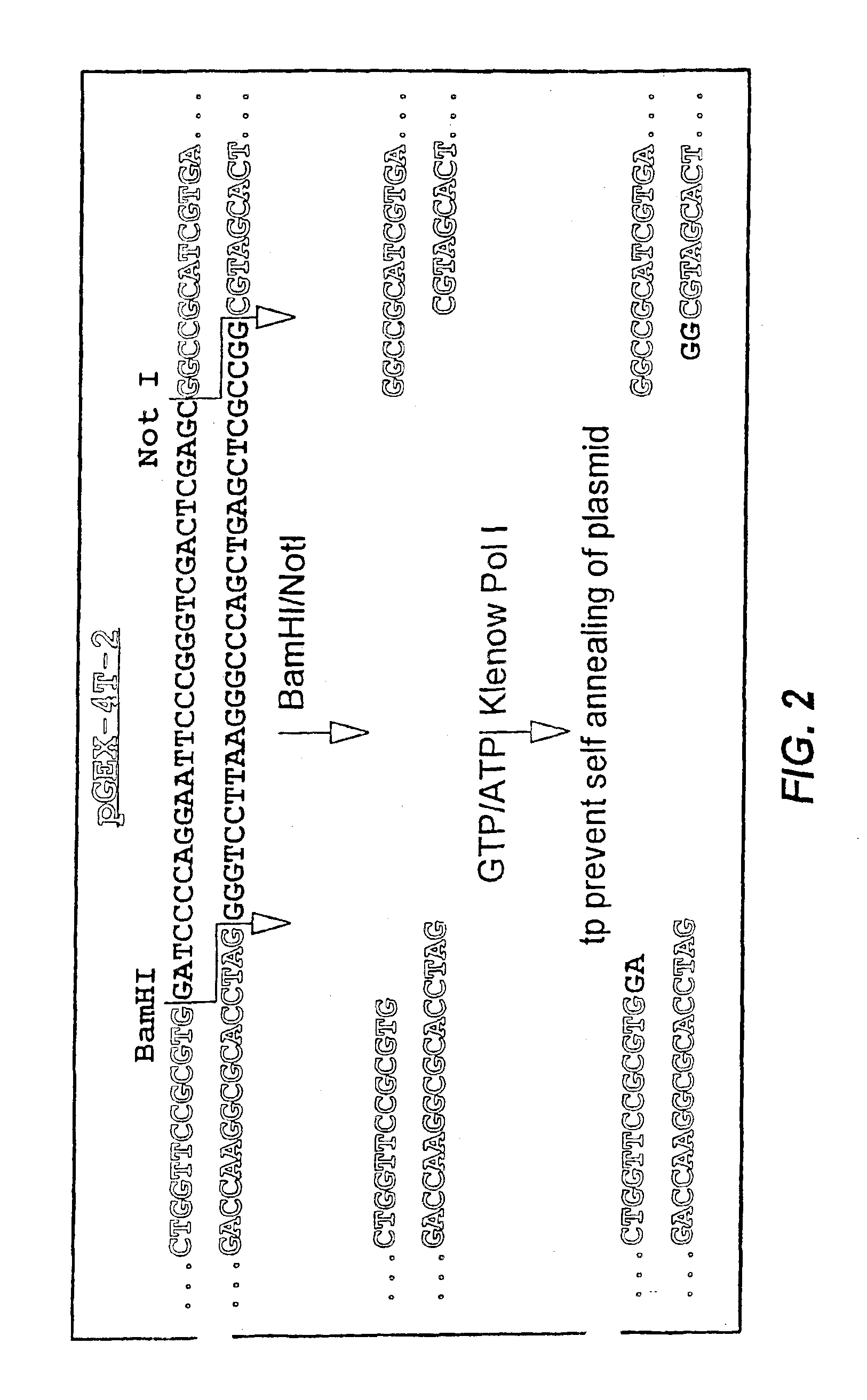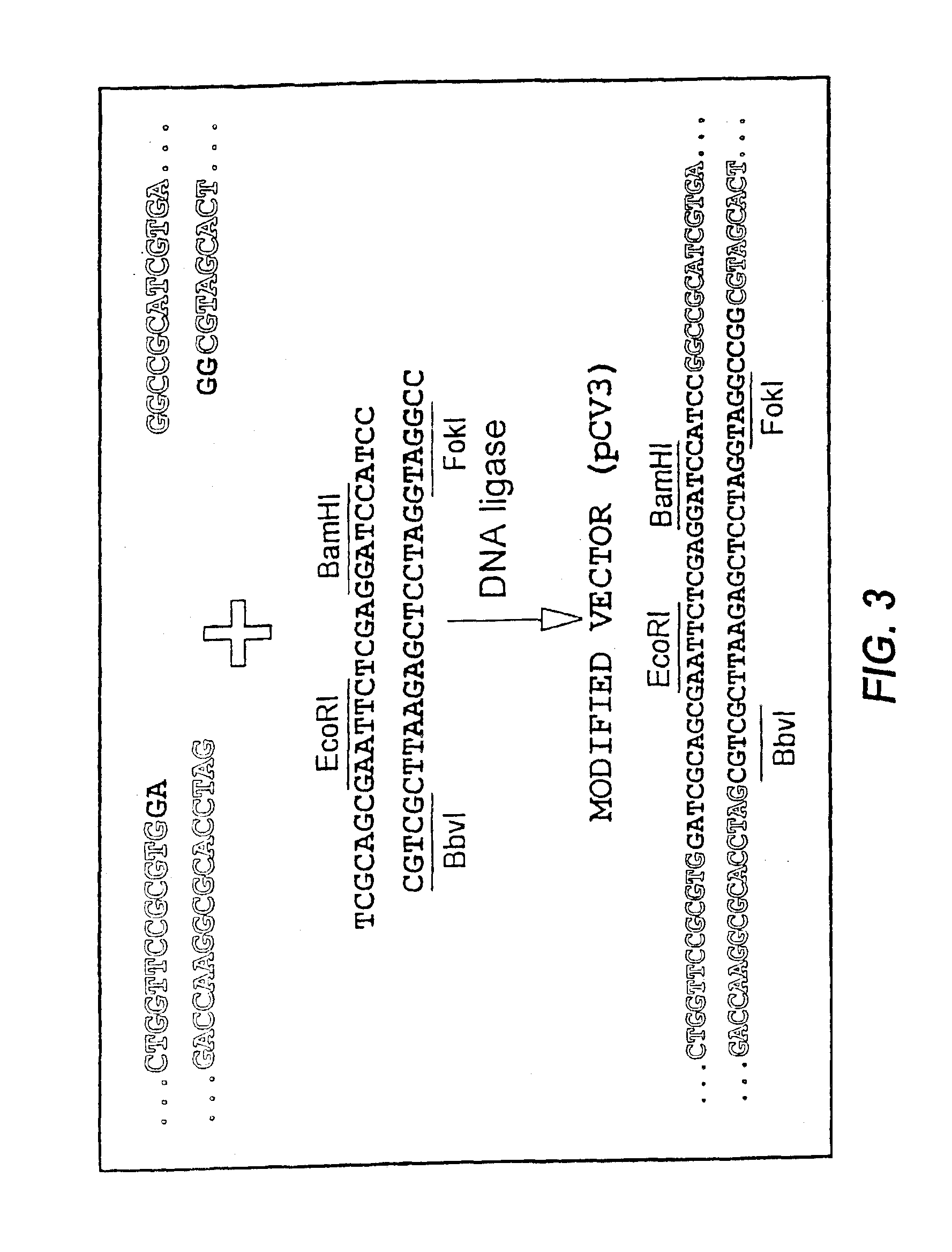Mosaic protein and restriction endonuclease assisted ligation method for making the same
a technology of restriction endonuclease and protein, which is applied in the direction of peptides, viruses, dna/rna fragmentation, etc., can solve the problems that pcr, etr cannot be used to conveniently express short fragments of synthetic genes, and the use of genotype 1 recombinant proteins as immunologic targets, etc., to achieve the effect of improving the immunoreactivity spectrum, improving the sensitivity and specificity of antigen
- Summary
- Abstract
- Description
- Claims
- Application Information
AI Technical Summary
Benefits of technology
Problems solved by technology
Method used
Image
Examples
example 1
Restriction Endonuclease Assisted Ligation
[0053]Each monomer, or DNA segment encoding a peptide of interest, was prepared from synthetic oligonucleotides of 40-80 nucleotides that overlapped at 8-10 nucleotides and contained an EcoRI site on the 5′-terminus of the plus strand and a BamHI site on the 5′-terminus of the negative strand. More detailed examples of such monomers can be seen in SEQ ID NOs:1-22 and 34-51 described in Examples 2 and 3 herein. Single strand DNA was converted to double stranded DNA by adding 50 pmol of each oligodeoxynucleotide, 2 μl BamHI buffer (Boehringer Mannheim, Indianapolis, Ind.) and 2.5 pmol dNTPs in a total volume of 20 μl. The mixture was heated to 95° C. for 1 minute and cooled on ice. After adding 1 μl of the Klenow fragment of DNA polymerase I (Promega, Madison, Wis.), the reaction mixture was incubated 30 minutes at room temperature. An incubation step at 65° C. for 10 minutes was used to inactivate the DNA polymerase. The resulting double stra...
example 2
Design and Production of an Artificial Nucleocapsid Mosaic Protein
Analysis of Data Derived from Genebank
[0058]The N-terminal region spanning amino acids 5-33 of the nucleocapsid (NC) protein was selected as the region to develop a mosaic protein because of the presence of several strong and broadly immunoreactive antigenic epitopes (unpublished data). All known HCV sequences deposited in Genebank were analyzed using the program FASTA (Wisconsin Package 9.0, Genetics Computer Group (GCG), Madison, Wis.). Out of 77 available sequences demonstrating variations in this region, 11 variants representing 3 different HCV genotypes were selected for designing an artificial mosaic gene. FIG. 9 represents the amino acid sequence of each of the 11 variants, referred to as fragments or monomers, comprising the mosaic NC protein.
[0059]The construction of the artificial gene was accomplished using the previously described Restriction Endonuclease Assisted Ligation (REAL) met...
example 3
Design and Production of an Artificial NS4 Mosaic Protein
Design of an Artificial NS4 Mosaic Protein
[0073]To construct an artificial NS4 antigen containing antigenic epitopes from several HCV genotypes, all sequences from the 5-1-1 region as well as a strongly immunoreactive region located at the C-terminal of NS4 were searched in GeneBank. Representative regions from different genotypes were selected based upon significant sequence divergence from each other and are shown in FIG. 18.
[0074]The amino acid sequence as shown in FIG. 18 was back translated into its nucleotide sequence, and synthetic oligonucleotides, were used to construct nine monomers, the first eight consisting of two antigenic domains and the ninth consisting of one antigenic domain, and were consecutively assembled using Restriction Endonuclease Assisted Ligation (REAL). The synthetic oligonucleotides used were as follows:
[0075]
A1: 5′-CCC CGA ATT CAA GCC GCC CAC ATA CCA TAC(SEQ ID NO:34);CTA GAA CAA GGA...
PUM
| Property | Measurement | Unit |
|---|---|---|
| total volume | aaaaa | aaaaa |
| total volume | aaaaa | aaaaa |
| molecular weight | aaaaa | aaaaa |
Abstract
Description
Claims
Application Information
 Login to View More
Login to View More - R&D
- Intellectual Property
- Life Sciences
- Materials
- Tech Scout
- Unparalleled Data Quality
- Higher Quality Content
- 60% Fewer Hallucinations
Browse by: Latest US Patents, China's latest patents, Technical Efficacy Thesaurus, Application Domain, Technology Topic, Popular Technical Reports.
© 2025 PatSnap. All rights reserved.Legal|Privacy policy|Modern Slavery Act Transparency Statement|Sitemap|About US| Contact US: help@patsnap.com



